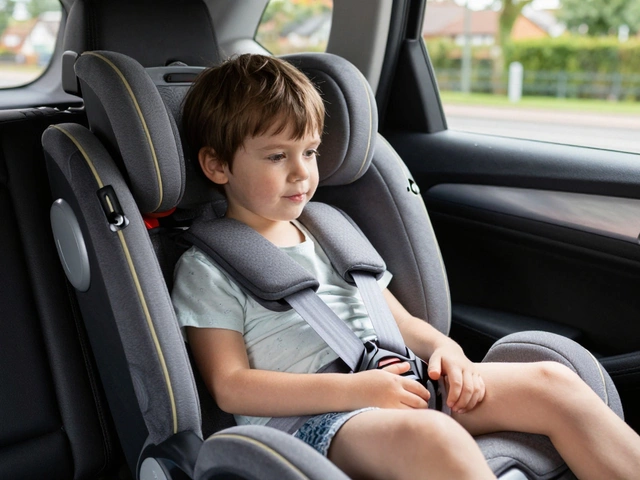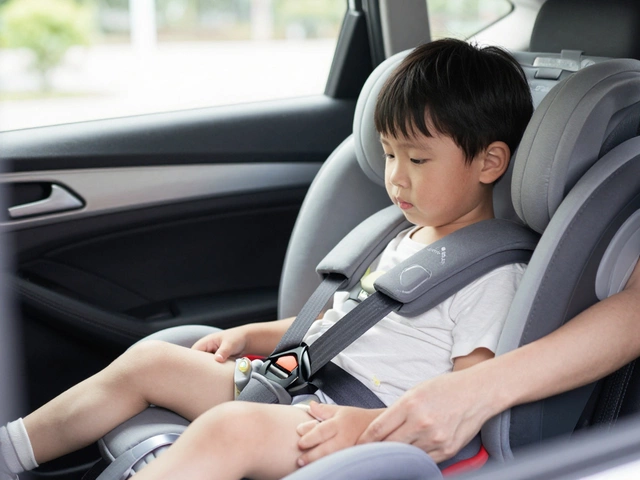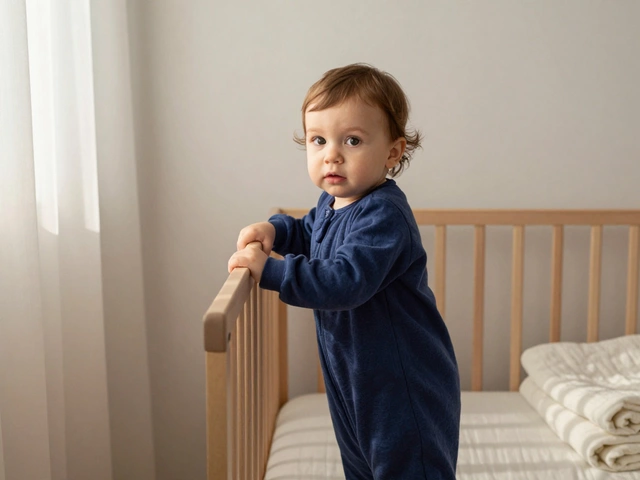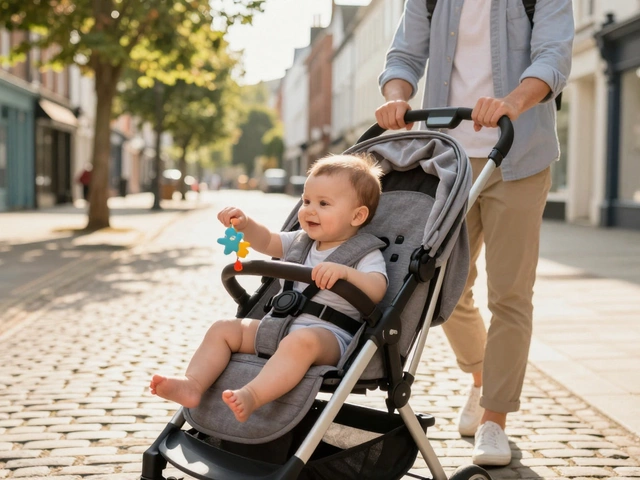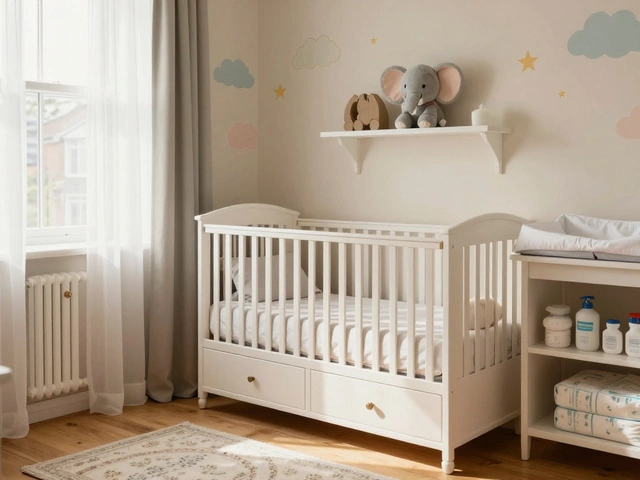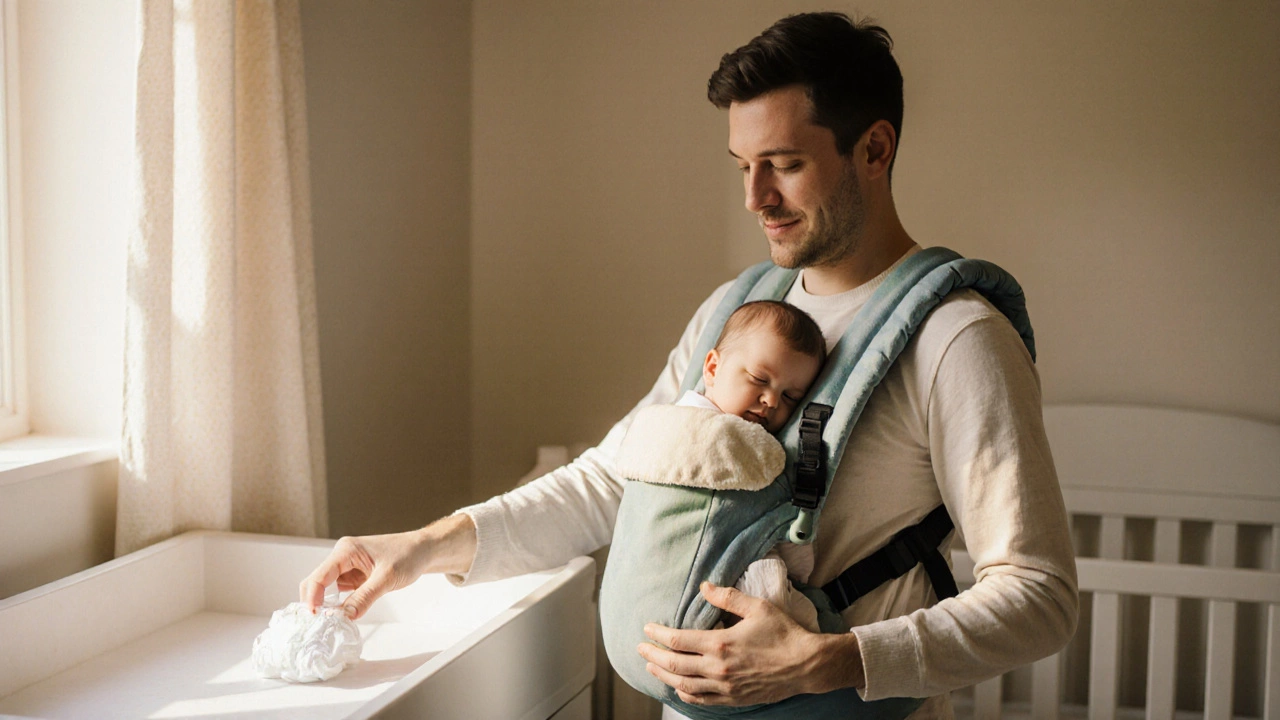
Baby Carrier Selection Tool
Find Your Perfect Baby Carrier
Answer a few simple questions to get personalized recommendations for the best baby carrier type for your baby and your lifestyle.
Your Personalized Recommendations
Best Match for Your Needs:
Key Features for Your Selection:
Why This Carrier Works for You
When you’re juggling diapers, bottles, and a sleepy newborn, a good baby carrier can feel like a lifesaver. But with wraps, ring slings, soft‑structured carriers and a handful of other styles on the market, figuring out which one actually fits your life isn’t always easy.
Baby Carrier is a device that lets you wear your infant or toddler close to your body, keeping hands free while providing comfort and support for both parent and child. In this guide we’ll break down the main carrier families, the criteria you should weigh, and a quick‑look comparison chart so you can pick the best option for your baby and your routine.
Carrier Families at a Glance
Every carrier falls into one of five broad families. Knowing the difference helps you narrow down the list before you even step into a store.
- Wrap is a long piece of fabric that you coil around yourself and your baby, creating a custom‑fit pouch. Think of it as a soft blanket that becomes a carrier.
- Ring Sling uses two metal rings to adjust the length of a single piece of fabric, making it quick to slip on and off. It’s popular for newborns and quick errands.
- Soft‑structured Carrier (SSC) features padded straps, a rigid waist belt and a bucket‑shaped pocket that holds the baby. Offers easy front‑to‑back transitions.
- Mei Tai combines a rectangular panel with four straps that tie around the waist and shoulders. It’s a hybrid between a wrap and an SSC.
- Hip Carrier places the baby on the parent’s hip and typically includes a supportive waist strap. Ideal for toddlers who love to look around.
How to Choose the Right Carrier
Pick a carrier that matches three personal variables: your baby’s age/size, your daily routine, and your comfort preferences. Below are the most common decision points.
- Age & Weight Range: Most carriers list a minimum weight (often 3-8 lb for newborns) and a maximum (generally 35 lb for SSCs). Wraps and ring slings usually accommodate the widest range because you can adjust the fabric.
- Safety Features: Look for a five‑point harness, sturdy buckles, and a waist belt that keeps the carrier from slipping off your shoulders. The carrier should keep the baby’s airway clear-no chin on the chest.
- Ergonomic Design: A carrier that supports the baby’s hips in the “M‑position” (knees higher than hips) helps prevent developmental dysplasia of the hip (DDH). Most modern SSCs and Mei Tai models advertise this.
- Ease of Use: If you’re a busy parent, a carrier that clicks in and out (like many SSCs) may be worth the extra cost. Wraps require practice but are super versatile once you’ve mastered them.
- Lifestyle Fit: Do you walk the dog, jog, or use public transport? A compact carrier that folds flat (ring slings, many SSCs) works well for travel. A larger wrap is great for home lounging.
- Materials & Climate: Breathable cotton or linen works for summer; fleece or padded fabrics are cozy for winter. Check for machine‑washable labels if you expect spills.
2025 Top Picks - Quick Comparison
| Carrier Type | Weight Range | Hip‑Healthy? | Ease of Use | Best For |
|---|---|---|---|---|
| Wrap | 3 lb - 35 lb | Yes (custom fit) | Medium (requires practice) | Skin‑to‑skin bonding, breastfeeding |
| Ring Sling | 5 lb - 25 lb | Yes (if tied correctly) | Easy (quick on‑off) | Quick trips, newborns |
| Soft‑structured Carrier | 8 lb - 35 lb | Yes (M‑position bucket) | Very Easy (buckles) | All‑day wear, travel |
| Mei Tai | 8 lb - 30 lb | Yes (wide hips) | Medium (tying straps) | Parents who want a hybrid feel |
| Hip Carrier | 15 lb - 45 lb | Depends on model (look for pelvic support) | Easy (clip‑in) | Toddlers, active outings |
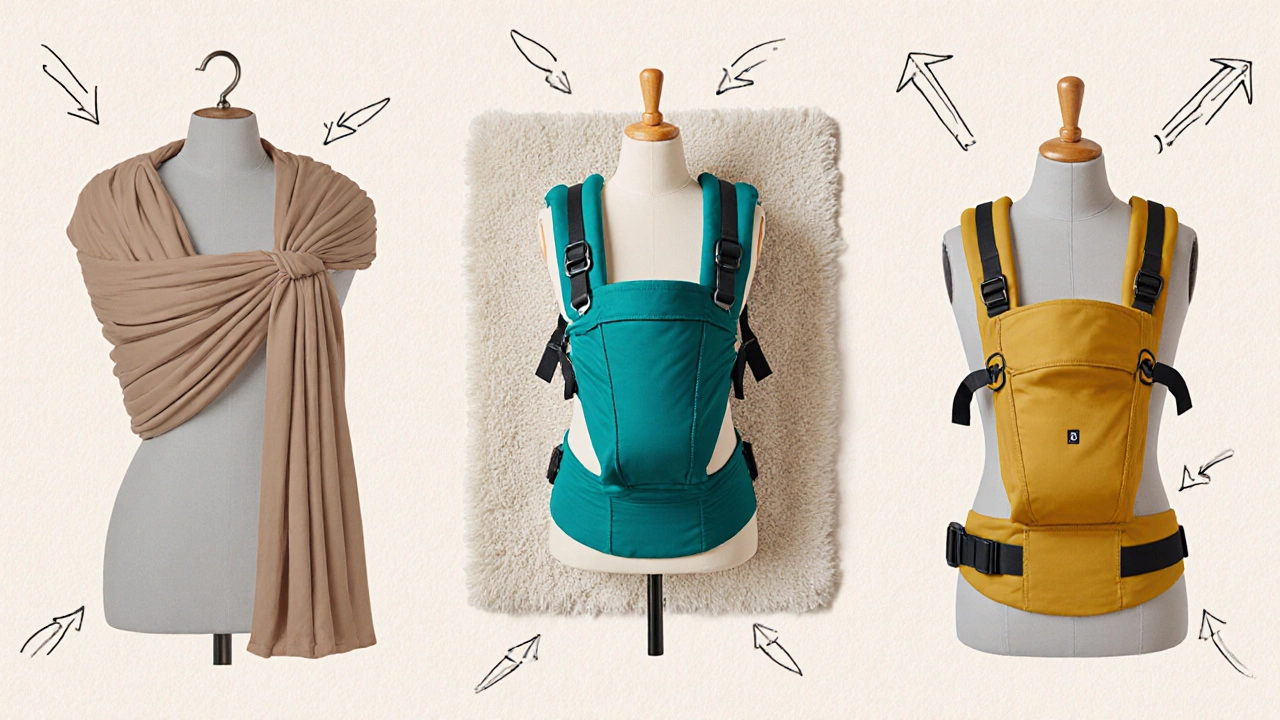
Step‑by‑Step: How to Wear a Soft‑structured Carrier Safely
Even if you pick an SSC, the first few outings can feel awkward. Follow these steps to lock in a safe, ergonomic hold.
- Place the carrier on a flat surface, open the front flap and set the waist belt on the floor.
- Step into the waist belt, pulling it snug so it sits low on your hips (around the pelvis, not the waist).
- Slide the baby in front of you, facing either inward or outward. Their head should rest in the cradle, with the chin off the chest.
- Pull the shoulder straps up and over your shoulders, then fasten the buckles at chest level.
- Adjust the shoulder straps so they’re snug but not cutting off circulation. The baby’s hips should form a “M” shape.
- Do a quick wiggle test: try lifting your arms overhead. If the carrier stays put and the baby feels cozy, you’re good to go.
Avoid These Common Pitfalls
Many parents stumble on the same mistakes. Spotting them early saves both you and the baby.
- Loose straps. If the waist belt slides up, it can pull the baby’s weight onto your shoulders, causing back strain.
- Improper hip positioning. A straight‑leg “saddle” pose can lead to DDH. Always check that the baby’s knees are equal to or higher than the hips.
- Over‑heating. Fabrics that don’t breathe can cause sweating, especially in summer. Choose natural fibers or carriers with mesh panels.
- Not using the harness. The five‑point harness is there for a reason-never rely on the straps alone.
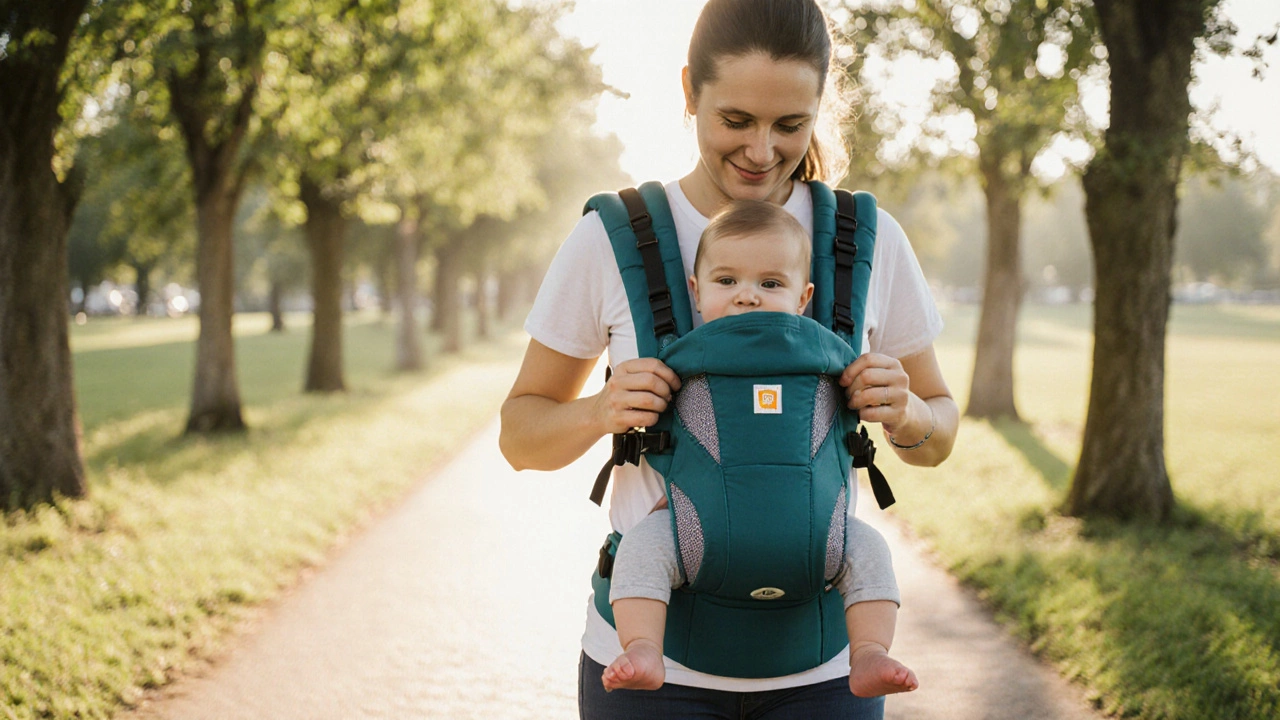
When to Switch Carriers
There’s no hard deadline, but a few signs tell you it’s time to upgrade.
- Baby reaches the carrier’s upper weight limit.
- They start to sit up unsupported; many wrap designs no longer give adequate head support.
- You notice persistent discomfort on your shoulders or back after 30 minutes.
- Your lifestyle changes - for example, you start jogging and need a sport‑specific carrier.
Transition gradually. Let the baby try the new carrier for short walks, then increase the duration as you both get comfortable.
Frequently Asked Questions
Can I use a baby carrier for newborns?
Yes, as long as the carrier’s weight range starts at 3-5 lb and it offers full head‑and‑neck support. Wraps and ring slings are especially newborn‑friendly because you can control the tightness.
Is a soft‑structured carrier safe for toddlers?
Absolutely. Most SSCs are rated up to 35 lb, covering most toddlers. Just be sure the hip cradle stays in the “M” position and the waist belt is snug.
Do I need to worry about hip dysplasia with carriers?
If the carrier holds the baby’s thighs spread wide enough that the knees are higher than the hips, the risk is minimal. Look for carriers that specifically label "hip‑healthy" or "M‑position".
Can I breastfeed while wearing a carrier?
Wraps and many ring slings make nursing super easy because you can adjust the fabric for a clear view. Some SSCs have a front‑close position that also works, though it may require a little practice.
How do I clean my carrier?
Most cotton or polyester blends are machine‑washable on a gentle cycle. Remove buckles and straps first, air‑dry, and avoid high heat which can weaken the fabrics.


